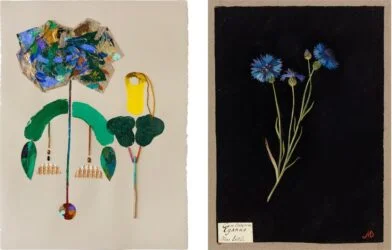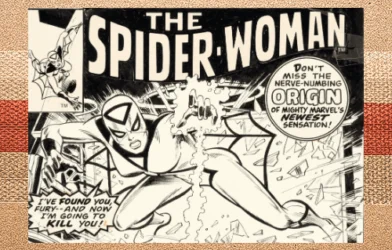Daily life at the asylum where Van Gogh lived for a year in 1889-90 must have been extremely tough, surrounded as he was by fellow inmates who were often in an even worse condition than himself. There were two things that kept him going. Most important of all was being able to paint, but he could also escape into its large walled garden.
The garden of Saint-Paul-de-Mausole, just outside Saint-Rémy-de-Provence, had been laid out in the early 19th century by Louis Mercurin, who established the asylum. The doctor held the progressive view that walking among nature was therapeutic for troubled minds.
With the National Gallery’s exhibition Van Gogh: Poets and Lovers (14 September-19 January 2025) coming up, a small group of writers was recently invited into the garden by Jean-Marc Boulon. He is the medical director of what is now a modern hospital for patients with mental health issues. We were allowed in when no patients were outdoors and it was a very privileged occasion. All the paintings illustrated here will be included in the London exhibition. The photographs are intended to give an idea of what Van Gogh would have seen, but do not represent the exact spot where he put up his easel.
My first strong impression was how little the garden had changed since Van Gogh’s time. In his painting Hospital at Saint-Rémy (September-October 1889), the early-19th century wing at the back still stands (modernised inside), a view even today framed by trees. Vincent described his picture to his brother Theo as “the pines and the cedar bushes against the blue”. In the painting, the trees soar gracefully into the sky, pushing the building into the background.
Set on three gently rising levels, the garden had already become overgrown by Van Gogh’s time, much of it covered with ivy. A full hectare in area, it was enclosed by the L-shaped men’s blocks and two tall stone walls, providing a secluded haven for the inmates. Slightly wistfully, Vincent explained to Theo on his arrival that as “life happens above all in the garden, it isn’t so sad”.
He added in the same letter: “Since I’ve been here, the neglected garden planted with tall pines under which grow tall and badly tended grass intermingled with various weeds, has provided me with enough work.”
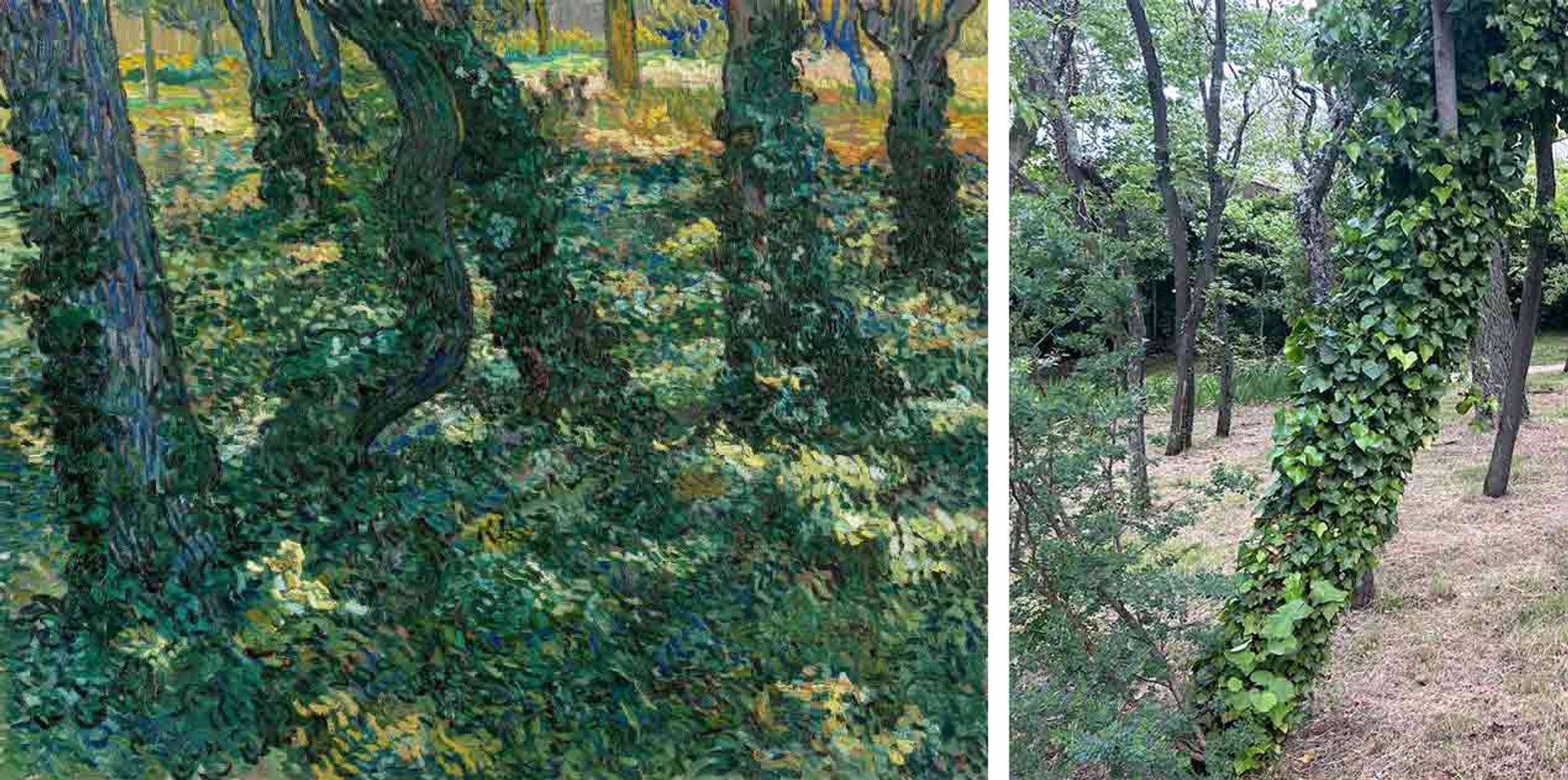
Van Gogh’s Undergrowth (July 1889) and photograph (April 2024)
Van Gogh Museum, Amsterdam (Vincent van Gogh Foundation); © Martin Bailey
Van Gogh had always loved ivy, which he felt created a striking, albeit sombre mood. In his time it grew up the trunks of the pines in the asylum garden, as it does today, although it is no longer allowed to spread as much. Writing about a similar painting to Undergrowth, Vincent described “thick tree-trunks covered with ivy, the ground also covered with ivy”.

Van Gogh’s Trees in the Garden of the Asylum (September-October 1889) and photograph (April 2024)
Private collection; © Martin Bailey
Van Gogh sometimes used the twisted tree trunks to frame his compositions, as in Trees in the Garden of the Asylum (September-October 1889). These trees, which almost seem to dance across his painting, would have offered most welcome shade during the hot Provençal summers.
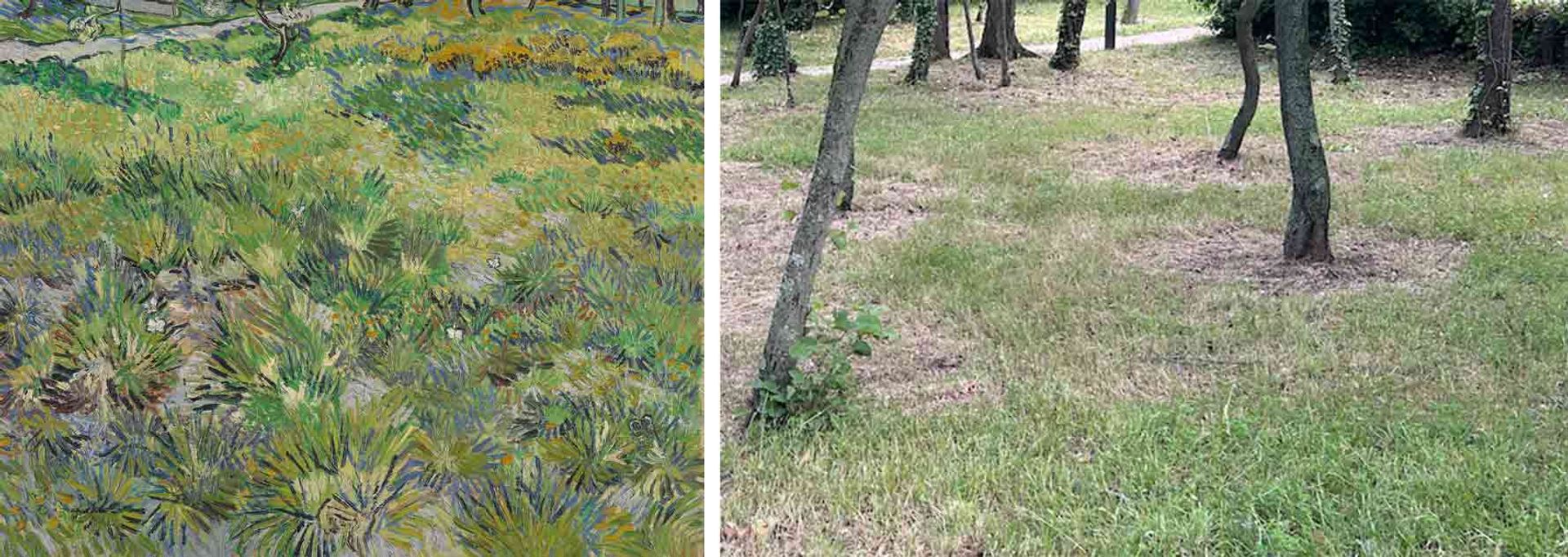
Van Gogh’s Long Grass with Butterflies (April-May 1890) and photograph (April 2024)
National Gallery London; © Martin Bailey
In Long Grass with Butterflies (April-May 1890) a trace of a path can just be made out in the upper left corner, but the emphasis is on the lush springtime vegetation. Vincent modestly described the scene as “a nook of greenery which seems to me to have some freshness”. This painting was done a year after his arrival, when he had got to know every corner of the garden—and in all the seasons. On our late April visit, the grass seemed dryer.
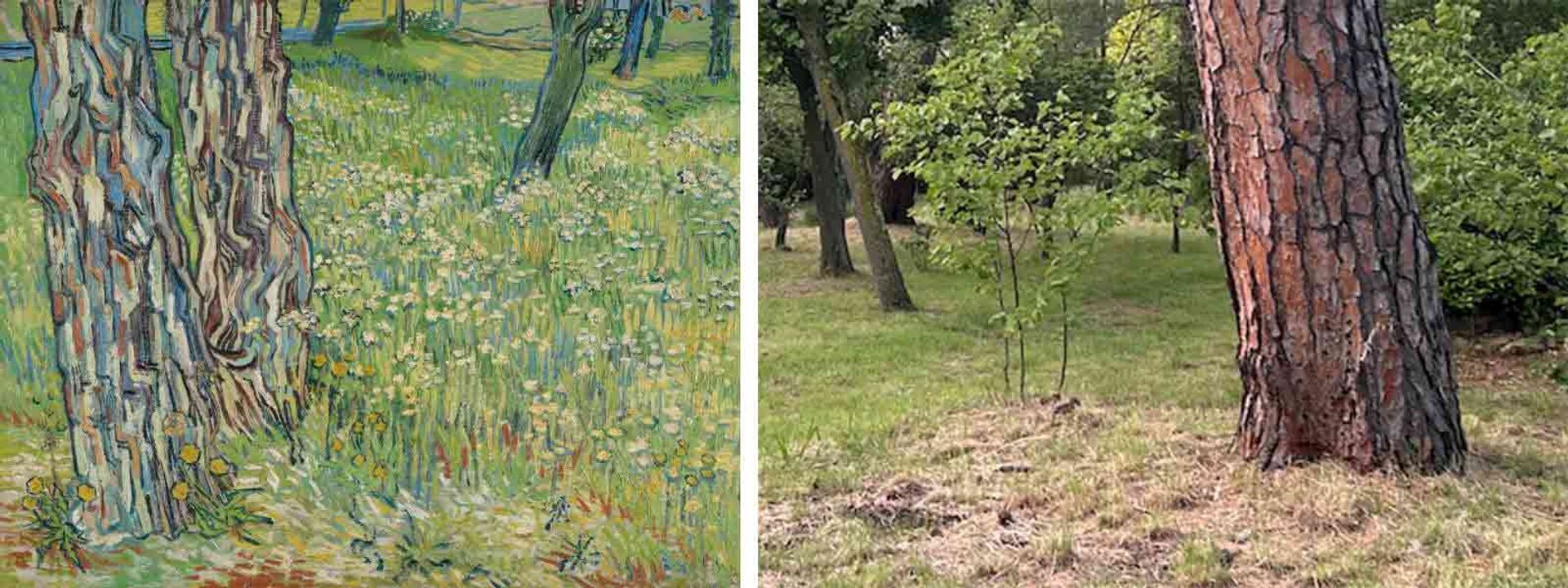
Van Gogh’s Tree Trunks in the Grass (April-May 1890) and photograph (April 2024)
Kröller-Müller Museum, Otterlo; © Martin Bailey
Vincent wrote to Theo on 29 April 1890: ”Work is going well, I’ve done two canvases of the fresh grass in the park, one of which is extremely simple”. Tree Trunks in the Grass was the “simple” one. He described the tree trunks painting as “a field in the full sunshine with yellow dandelions”. He beautifully captured the dramatic patterns on the bark of the closest pair of pines.
While painting Tree Trunks in the Grass Vincent had written to Theo: “I’ll be out of doors there. I’m sure that the desire to work will devour me and make me insensible to everything else and in a good mood. And I’ll let myself go there, not without consideration but without dwelling on regrets for things that might have been.” Beside these words, he drew a small sketch of the picture he was working on in the garden.

A letter from Vincent to Theo from 4 May 1890, with sketch of Tree Trunks in the Grass and related comments
Van Gogh Museum, Amsterdam (Vincent van Gogh Foundation)
On 16 May 1890, two weeks after completing this garden painting, Van Gogh left Saint-Paul-de-Mausole, hoping that he was cured. He stayed with Theo for a few days in Paris and then headed to Auvers-sur-Oise, just north-west of the capital. Tragically, this would be the place where, ten weeks later, Vincent would take his own life.
NOTE TO READERS: Adventures with Van Gogh will be taking a summer break, returning on 6 September





